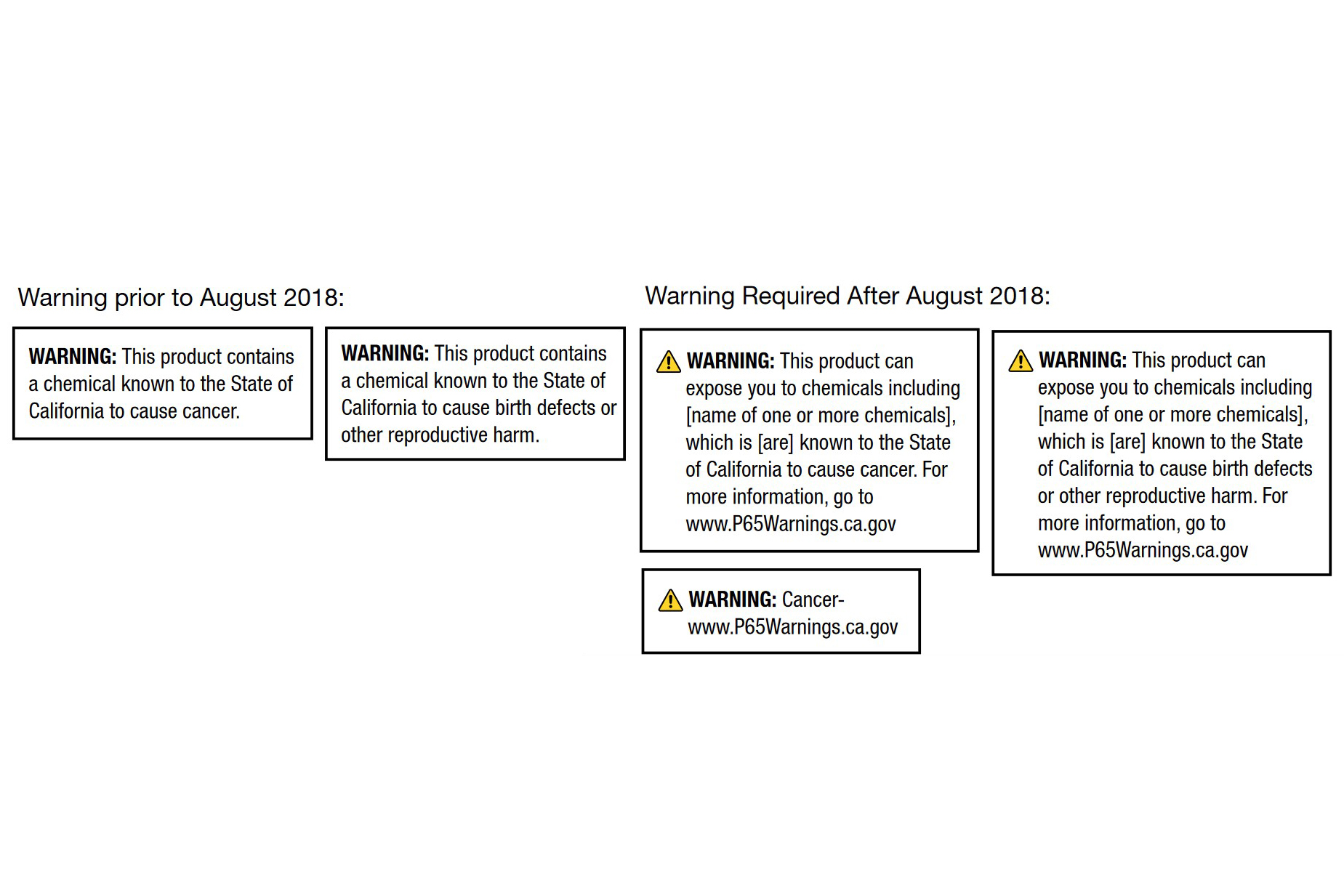California Prop 65 Changes Go Into Effect In August

Changes are coming later this year to California’s Safe Drinking Water and Toxic Enforcement Act of 1986, more commonly referred to as Proposition 65. Since it was first passed by California voters in a referendum by a near two-to-one vote, the list of chemicals susceptible to Proposition 65 regulation has grown from 30 to more than 900. Although the changes go into effect at the end of August, many businesses are already adjusting their compliance efforts to meet the new requirements.
The Office of Environmental Health Hazard Assessment (OEHHA), which administrates Proposition 65, has named various chemicals including ingredients or additives in a variety of household products, food, pesticides and others, as caution-causing chemicals. The new protocols will require businesses to identify at least one listed chemical that could be encountered in their products.
Some of the new requirements also require including a warning symbol with distinct specifications, a description of the endpoint of the exposure and a web address to the Prop 65 warnings website, plus a specification for the font size for the text of the warning label. The regulation requires that these warnings be made before the item is purchased, not just prior to the potential exposure.
PPAI provides several resources for industry businesses working to come into compliance with Prop 65 including an on-demand webinar on the regulations; a best practices guide that was updated in December 2017 and, among its state and municipal resources, Prop 65 warning samples that can be updated to suit industry businesses’ needs.

